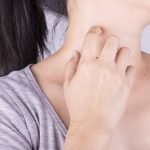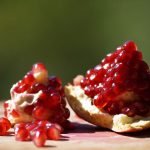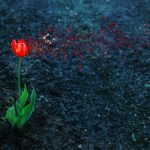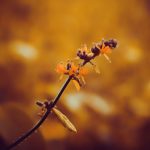Notes from the Field: August, 2020
JARED L. ZEFF, ND, VNMI, LAC
The following is not an article prepared for a medical journal. Not every statement of fact is cited or referenced. This is a commentary on the medicine, a running set of observations about practice in the field. It’s not meant to be a peer-reviewed presentation; rather, these are notes and thoughts from a practicing naturopathic physician, a primary care doc in general practice.
Prescribing Strategies – Part 1
Anyone who has been reading these “Notes from the Field” will have noticed that I treat most cases almost identically. I thought I should address this.
Forty-one years ago, I opened a naturopathic practice in McMinnville, Oregon, around the end of October (when I’m writing this). I had just received my brand-new license, and my partner, Bruce Dickson, and I had found a place to begin our work. It was an office suite on the second floor of the “1893” building on 3rd Street, the main shopping street in downtown McMinnville. Built in 1893, there was no elevator, just a broad set of stairs leading to the second floor. I was younger in those days, and when a patient needed a lift up to the office, they would honk their horn down in the street and I would run down and carry them up to the office. I remember old Helia Harshman, in her late 80s, who had consulted me for a difficult if not terminal problem. She weighed perhaps 89 pounds. Her daughter would drive her up to the building’s entrance, honk the horn, and I’d run down and carry her up the stairs for her daily hydrotherapy treatment. I did this for about 3 months until she was eventually able to walk the mile to our clinic and come up the stairs unassisted.
Still new to clinical practice, I based my work upon the diagnosis of disease and the substitution of botanicals, homeopathics, and supplements for the drugs that a conventional physician would use to treat the diagnosis. However, I was becoming frustrated with the futility I was experiencing with that treatment strategy. It worked well for colds and flus and ear infections and such, but not for serious, chronic disease. I decided to return to school to become a medical doctor, not because I wanted to abandon naturopathic medicine – the idea of which I loved – but because I thought that if I could just do IV nutrients in order to deliver higher concentrations of them, then I might be able to gain traction with the serious problems – the autoimmune diseases, etc. More on that in a bit…
In those days, my practice centered around natural childbirth and family medicine. I had managed to put together a residency in obstetrics for myself. I loved obstetrics, and our license at that time included delivering babies. Everyone who graduated from NCNM had to deliver a few babies to graduate. For our class, the specific number was 8 births, if I recall correctly. Dr Babnick, the naturopathic obstetrician in Portland, was our primary teacher. He had around 8000 births under his belt by the time I had him for a teacher. But those 8 births were not enough for me; I felt unprepared for the variety of emergencies I might confront in those critical moments. I found a medical doctor in southern California, Dr Hai Abdul, who had a birthing center. He managed births in his clinic, as well as managing home and hospital births. I flew down to Azusa to talk with him, and I convinced him to let me study with him. He was very skeptical, but he agreed to let me come down after I showed him my license and the law which included natural childbirth. I spent 600 hours with him, and we delivered a baby about every 10 hours. We ran into all manner of emergencies, and l learned what I had wanted to learn. I also opened that door, and a number of colleagues followed me down. From that experience, we formed a club for continuing education in obstetrics, which later became the American College of Naturopathic Obstetricians, or ACNO. I wrote the first set of guidelines for out-of-hospital births for naturopathic doctors, which became the ACNO Standards. I loved it.
Obstetrics was a busy part of my practice, and that led to pediatrics, of course, and gynecology, and then general family medicine as mom finally convinced dad to see a doctor. But the tough cases, the chronic cases, remained difficult, and that it is what led me to apply to the Oregon Health & Science University (OHSU), the medical school in Portland, where I presumed I would not only gain greater skills and knowledge, but also obtain the privilege of doing IVs and other such treatments. Our law, in those days, forbade “penetration of the skin of mucous membrane for a therapeutic purpose,” with some exceptions. We could do minor surgery – and I did a lot of it – stretching the envelope about as far as I could.
Curing the Incurable
But I was hesitant. I did not really want to become an MD; I just wanted to be a better naturopathic physician. I saw no other way, but in the midst of my application process, that summer of 1982, I fasted and prayed for 3 days, seeking divine guidance for this project. Coincidentally, 2 weeks later I met Dr Harold Dick, of Spokane, Washington. He had been a protégé of Otis Carroll, ND. I heard Dr Dick speak at a seminar, in which he talked about how the difficult cases were easy and it was the impossible cases that were challenging. There were no incurable diseases, he said, though there were incurable patients. I arranged for my next incurable patient to go to Spokane, and I went along to spend the day with Dr Dick. What I saw in his clinic amazed me, and I asked if I could return. Although he tried to discourage me, he let me return 1 more time, and then 1 more time, and I wound up coming to his clinic “1 more time” once a month for several years. I soon discarded my application process to OHSU. I had found what I was seeking in Dr Dick. He was curing the incurable. He knew how to do it.
He told me what he was doing was hydrotherapy, and I began doing it just the way I saw it being done in his clinic. I saw marvelous things there, on Garland Avenue in Spokane. I would drive up to Spokane, get a cheap hotel room near the airport, and spend a few days observing in his clinic. Eventually I became like one of the family; they even had a room in their house for me. After the second visit or so, I set up some hydrotherapy tables in my clinic, obtained similar equipment for sine wave and diathermy and such, and began doing what I saw him do. But I did not get the same results. For the first year, I did the hydrotherapy, and used the same herbal combinations and supplements that he used, but I did not see the incurables getting better, not even the difficult cases.
After a year of observation with Dr Dick, I realized that he was giving an individualized diet to each patient. He would evaluate each patient in the manner he had learned from his mentor, and produce a specific set of dietary recommendations. He would start the hydrotherapy as the patient began to implement the dietary advice. I finally understood this after a year of studying with him. I asked him about it, and he agreed to do it for my patients. The first patient for whom we did this – in addition to the hydrotherapy and all – had a miraculous result. She came to me seeking relief for a difficult, itchy dermatitis. She coincidentally suffered from retinitis pigmentosa, but we both knew that was incurable. She was legally blind, could not read, could not drive, and saw me only as a vague gray shape sitting across my desk from her.
I obtained the dietary recommendations for her and began daily hydrotherapy. After several weeks, she reported not only that the dermatitis was resolving, but also that she seemed to be seeing better. After several months, she was able to read large-print books and could tell me the color of my eyes. She was amazed, and I was astounded. When I added the dietary advice to the hydrotherapy, my first healing miracle occurred. I had learned something significant, that some things needed to be in place before other things were done. This was the origin of the thinking that developed into the Therapeutic Order principle: that there is a natural order to therapeutic intervention.
The purpose of the diet was to correct digestive disturbance, enhance digestion, and reduce the production of toxic metabolites of the mal-digestive processes. I began to recall my early instruction in school about the concept of toxemia – something mentioned but not emphasized. Charley Cropley, my classmate and best buddy, had told me at the time to read Tilden’s Toxemia Explained. I read it but saw no significant application to what I was learning in school; it was just an historical concept, one of many I had heard of. But when I asked Dr Dick about it later, he told me that this was the central thing: The purpose of the dietary work is to correct this, to stop the production of the toxins. Later, when I read Lindlahr’s Nature Cure (something that had not been discussed in school), I saw Lindlahr’s 3 causes of chronic disease: 1) lowered vitality; 2) accumulation of morbid matter and poisons; and 3) abnormal composition of blood and lymph. What I was seeing in the patients was the morbid matter and poisons to which Lindlahr was referring, at least much of it. As the toxemia was reduced by identifying and removing foods that a person did not digest well, and then stimulating the vitality and improving the digestion through hydrotherapy and botanicals, the causes of chronic disease began to lessen, and the diseases began to resolve. This was the basic strategy by which Dr Dick’s patients regained their health. This became the central principle of my deeper understanding of naturopathic medicine.
As I continued to work with this principle, and continued my studies with Dr Dick, the idea became more refined. And I saw it reflected in other old works of naturopathic philosophy. On the first page of The Organon, Hahnemann wrote about how the true physician must identify obstacles to the cure and know how to remove them. I learned that this generally precedes giving the remedy, for it allows the remedy to work unhindered by a constant toxic accumulation that is stimulating the inflammatory reaction in the body. The remedy alone cannot remove that. Even stimulating the emunctories with drainage medicines, or with botanicals, does not address this primary source of the toxicity that the emunctories are designed to remove. Remove this source, and the emunctories become “unclogged” and unburdened. As a result, they work better.
A Simple Formula
The observant reader has seen this pattern in nearly every case I have presented in this series. In my previous article, about interstitial cystitis, I described this strategy. IC is a good illustration. It is a chronic, inflammatory condition of the bladder and other pelvic structures, which are in a state of constant pain, and for which there are no good conventional treatments. Why? What is driving the inflammation? That is unknown in conventional medicine. But not for the naturopathic physician. Inflammation is predominately driven by the proinflammatory toxins produced in the disordered digestive tract. This occurs through the dysbiotic metabolism of poorly digested food elements. The bacteria take the food residues and digest them differently than a healthy digestion would, resulting in the generation of a variety of toxins. One can find this discussed in the medical literature,1 but it does not fit the model of disease and treatment that predominates in conventional medicine. There is no drug yet that will effectively reduce the inflammation in the sensitive tissues affected by interstitial cystitis. Instead, one must stop the production of the toxins, and then, as they decrease in the body and the blood, the inflammation they are driving also decreases. This is why a case of IC can sometimes resolve in as little as 1 month, as the proinflammatory drivers rapidly diminish and exit the body. It is not always this quick and simple, but often it is.
This is why I love naturopathic medicine. There are often simple, non-toxic solutions to very difficult problems. I have presented here a simple strategy, the pattern I observed in the old doctor’s work, by which he healed the incurable. I have dedicated myself to practicing this and teaching it to any of my young colleagues who are interested.
Respectfully,
Jared L. Zeff, ND, VNMI, LAc
References:
- Drasar BS, Hill MJ. Human Intestinal Flora. New York, NY: Academic Press; 1974.

Jared L. Zeff, ND, VNMI, LAc is a licensed doctor of naturopathic medicine and a licensed acupuncturist. In addition to functioning as Medical Director at the Salmon Creek Naturopathic Clinic in Vancouver, WA, Dr Zeff taught on the faculty at National University of Natural Medicine in Portland, OR, where he was also Dean from 1988 to 1993, and holds a professorship in Naturopathic Medicine. Dr Zeff is a graduate of the University of California, NCNM, and the Emperor’s College of Traditional Oriental Medicine. He, along with Pamela Snider, is the author of the AANP’s Definition of Naturopathic Medicine, and the Therapeutic Order concept.










